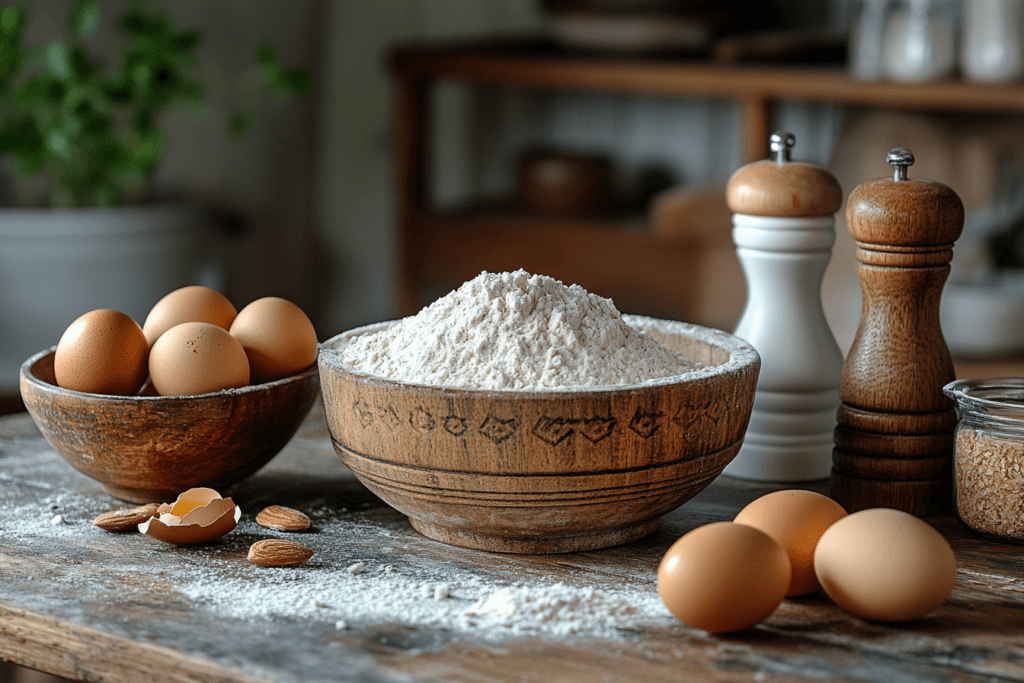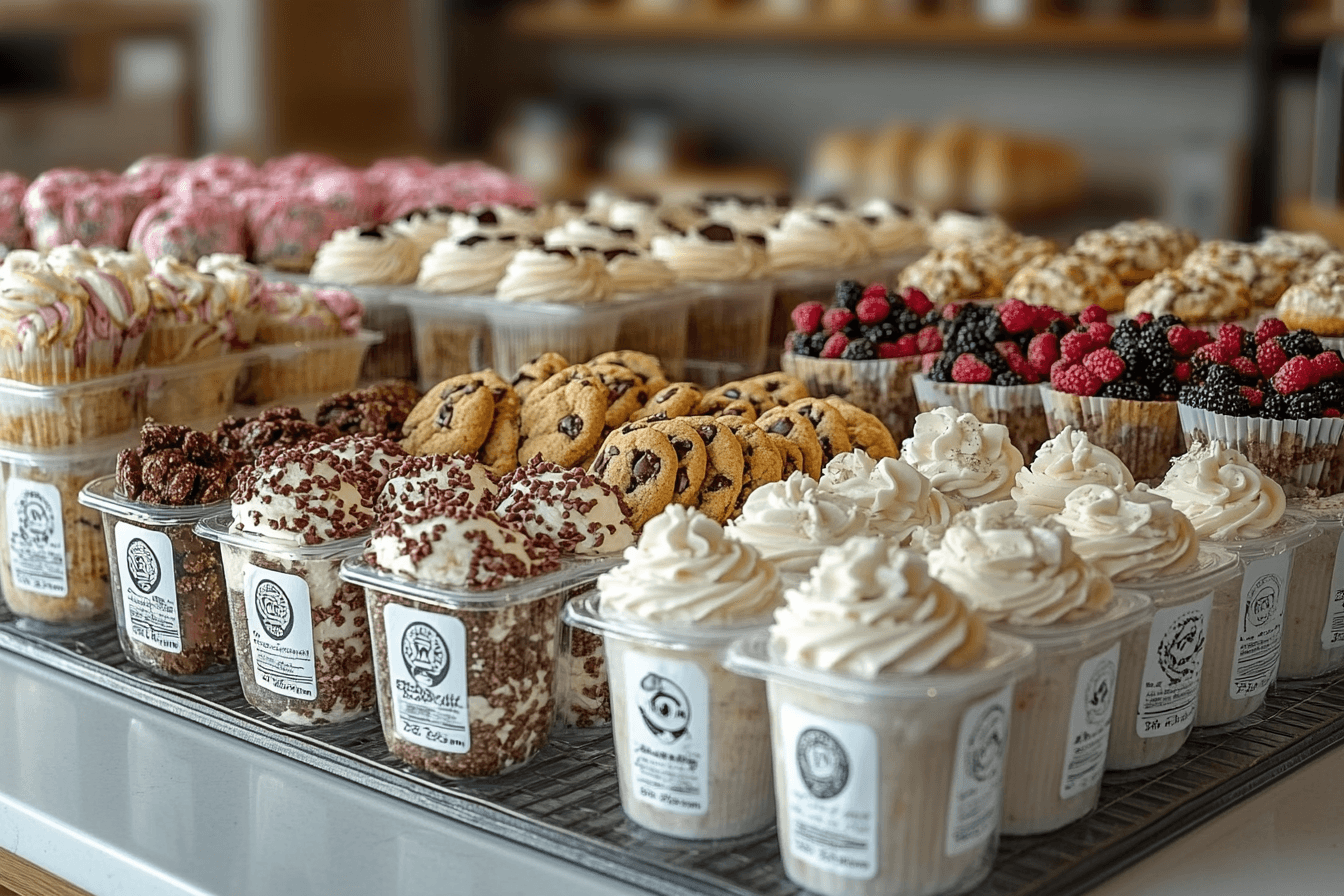How Do You Make Gluten-Free Dessert Less Dry?
If you’ve ever tried baking gluten-free desserts, you know they can sometimes turn out dry and crumbly. It’s frustrating, right? You spend time and effort making a delicious treat only to find it doesn’t live up to your expectations. So, how do you make gluten-free desserts less dry? Let’s dive into the science and solutions behind this common challenge.
Table of Contents
Understanding the Challenge of Gluten-Free Baking
Creating moist, delicious gluten-free desserts can feel like navigating a maze. Traditional baking relies heavily on gluten—a protein found in wheat, barley, and rye—to provide structure, elasticity, and moisture retention. Without it, desserts can easily become dry or lack the soft, fluffy texture we’re used to.

What Makes Gluten-Free Desserts Dry?
The absence of gluten is the main culprit here. Gluten acts like a sponge in traditional baking, trapping moisture and providing a cohesive structure. When you remove gluten, you lose that moisture-retaining quality, which can lead to crumbly or dry results. Other factors include:
- Using the wrong type of gluten-free flour.
- Overbaking due to inaccurate temperature control.
- Skipping binders or not compensating for lost structure.
Role of Gluten in Traditional Baking
Why does gluten matter so much? Think of gluten as the glue that holds your baked goods together. It creates an elastic network that traps air bubbles during baking, resulting in soft, airy cakes or cookies. Without it, your desserts can lack this essential “glue,” leaving them dense and dry.
“Understanding gluten’s role in baking is the first step to mastering gluten-free recipes. Knowledge is power—especially in the kitchen!”
Common Ingredients in Gluten-Free Baking
Gluten-free baking requires creative replacements for gluten’s binding properties. Common ingredients include:
- Alternative Flours: Almond flour, coconut flour, or rice flour.
- Starches: Tapioca starch or potato starch for structure.
- Binders: Xanthan gum or guar gum to mimic gluten’s elasticity.
Each of these plays a specific role, but their success hinges on proper ratios and techniques.
Tips to Avoid Dryness in Gluten-Free Desserts
Now that we understand the problem, let’s look at practical solutions to keep your gluten-free desserts moist and delightful.
Selecting the Right Gluten-Free Flour
Not all gluten-free flours are created equal. Single-ingredient flours, like almond or coconut, lack the balance needed for successful baking. A gluten-free flour blend—which typically combines a mix of flours and starches—is your best bet. Look for blends that already include binders like xanthan gum.
Adding Moisture with Liquid Ingredients
Here’s the golden rule: gluten-free baking needs extra moisture. Adding ingredients like:
- Applesauce or mashed bananas for natural sweetness and moisture.
- Yogurt or sour cream to keep batters moist.
- Buttermilk or plant-based milk alternatives for added richness.
Even a splash of oil or melted butter can make a big difference in texture.
Balancing Sugar and Fat Content
Sugar and fat are not just for flavor—they contribute to moisture. Consider:
- Brown sugar over white sugar for added molasses and moisture.
- Increasing fat content slightly (like butter or oil) in gluten-free recipes.
- Avoiding low-fat substitutions, as they can dry out your desserts.
“When in doubt, remember this rule: Fat is your friend in gluten-free baking. Don’t skimp!”
Using Binders to Enhance Texture
Gluten-free baking without binders is like building a sandcastle without water—it just won’t hold together. Incorporate:
- Xanthan gum or guar gum in small amounts (usually 1 tsp per cup of flour).
- Eggs or flaxseed meal for extra structure and moisture.
These binders ensure your desserts stay cohesive without being crumbly.
Key Techniques to Improve Gluten-Free Dessert Texture
Beyond ingredients, technique is crucial to creating desserts that are moist and satisfying.
Mixing and Measuring Tips
Precision is everything in gluten-free baking:
- Weigh your ingredients instead of using measuring cups for accuracy.
- Avoid overmixing, which can lead to tough textures.
- Add liquid ingredients gradually to avoid overly thin batters.
Adjusting Baking Times and Temperatures
Gluten-free desserts bake differently than their gluten-filled counterparts:
- Lower the baking temperature slightly (by 25°F) to prevent dryness.
- Check for doneness early, as gluten-free goods can overbake quickly.
- Use toothpick tests sparingly—many desserts continue cooking slightly after being removed from the oven.
Layering Flavors for a Better Taste Experience
Moisture alone doesn’t make a dessert memorable—flavor matters, too. Enhance your gluten-free desserts by:
- Adding vanilla extract or spices like cinnamon for depth.
- Incorporating zests (lemon, lime, or orange) to brighten flavors.
- Using chocolate chips, nuts, or dried fruits for texture and taste variety.
“Creating gluten-free desserts isn’t just science—it’s an art. Experiment boldly, and you’ll find your signature style!”
Popular Gluten-Free Dessert Recipes and Their Moist Variations
Gluten-free desserts can be just as decadent and mouthwatering as their traditional counterparts. The key? Recipes designed specifically for moisture and flavor. Let’s explore some popular gluten-free desserts and the tweaks that make them irresistibly moist and tender.
Moist Gluten-Free Chocolate Cake

A good chocolate cake is the ultimate crowd-pleaser, and a gluten-free version shouldn’t be any different. Here’s how to make a moist gluten-free chocolate cake:
Ingredients for Extra Moisture:
- Use Greek yogurt or sour cream for a creamy texture.
- Replace part of the water with hot coffee to enhance the chocolate flavor.
- Incorporate vegetable oil instead of butter for more consistent moisture retention.
Key Tip: Add a pinch of xanthan gum to your gluten-free flour blend for better structure.
“A moist gluten-free chocolate cake feels like a warm hug for your taste buds—rich, fudgy, and unforgettable.”
Decadent Gluten-Free Brownies
Brownies are meant to be fudgy and chewy, and the gluten-free version should deliver the same indulgence.
Pro Tips for Moist Gluten-Free Brownies:
- Use almond flour for a slightly nutty flavor and soft texture.
- Substitute part of the sugar with honey or maple syrup for added moisture.
- Avoid overbaking—pull them out of the oven while they’re still slightly soft in the center.
Bonus Tip: Fold in chunks of dark chocolate or caramel bits for gooey pockets of flavor.
Fluffy Gluten-Free Cupcakes
Who doesn’t love a fluffy, perfectly sweet cupcake? Gluten-free cupcakes can rise beautifully with the right techniques.
Steps to Fluffy Cupcakes:
- Mix the batter gently to avoid overworking the ingredients.
- Use a combination of buttermilk and vegetable oil for extra moisture.
- Fill the cupcake liners only halfway to ensure an even rise.
Flavor Ideas: Experiment with flavors like lemon, vanilla, or red velvet for variety. Top with a generous swirl of buttercream frosting for the ultimate treat.
Troubleshooting Common Problems in Gluten-Free Baking
Even with the best recipes, issues can arise. Here are some common problems and solutions to perfect your gluten-free desserts.
Why Is My Cake Still Dry Despite Adding Liquid?
If your cake is dry even after following the recipe, the culprit may be:
- Incorrect flour blend: Not all gluten-free flours perform equally. Opt for a mix designed for baking.
- Overbaking: Gluten-free desserts bake faster. Use an oven thermometer to ensure accurate temperatures.
- Skipping the resting time: Let your batter rest for 15 minutes before baking to hydrate the flours and improve moisture.
How to Handle Crumbly Textures in Gluten-Free Desserts
Crumbly textures are a frequent frustration in gluten-free baking. To fix this:
- Add binders: Xanthan gum or guar gum can improve the structure.
- Increase fat content: Butter, oil, or nut butters add richness and hold desserts together.
- Incorporate eggs or flaxseed meal: These provide the structure often missing in gluten-free recipes.
“Remember, baking is all about trial and error. Every crumbly cake is just one step closer to your masterpiece!”
Pro Tips for Storing Gluten-Free Desserts Without Drying Out
Once your desserts are baked to perfection, the next challenge is keeping them fresh. Gluten-free treats are more prone to drying out, so proper storage is key.
Best Practices for Cooling and Storing
- Let baked goods cool completely before storing them to prevent condensation.
- Wrap desserts tightly in plastic wrap or store them in airtight containers.
- For cakes and cupcakes, add a layer of frosting or glaze to seal in moisture.
Freezing Gluten-Free Desserts Properly
Freezing is an excellent way to preserve gluten-free desserts. Follow these steps:
- Wrap each piece individually in plastic wrap or foil.
- Place wrapped desserts in a freezer-safe bag or container.
- Thaw at room temperature or in the fridge to prevent sogginess.
Bonus Tip: Add a slice of bread to the storage container—this helps keep baked goods soft and moist.
Final Thoughts on Perfecting Gluten-Free Desserts
By now, you’ve learned the science, techniques, and troubleshooting skills needed to create gluten-free desserts that are moist, flavorful, and irresistible. It’s time to wrap things up with a recap of key strategies, a bit of encouragement, and some extra tips to keep your gluten-free baking journey fun and rewarding.
Recap of Key Strategies
Here’s a quick summary of what we’ve covered to help you make gluten-free desserts less dry:
- Choose the right gluten-free flour blend: A balanced mix with starches and binders is essential.
- Incorporate moisture-rich ingredients: Think yogurt, applesauce, or buttermilk.
- Don’t skip binders: Xanthan gum, guar gum, or eggs are crucial for structure.
- Use precise baking techniques: Measure carefully, adjust oven temperatures, and avoid overbaking.
- Store baked goods properly: Airtight containers and freezing extend freshness.
“Great gluten-free desserts aren’t an accident—they’re the result of patience, creativity, and practice. Keep experimenting!”
Encouragement for Experimenting in the Kitchen
Gluten-free baking may feel like an uphill climb at first, but remember: Every recipe is an opportunity to learn. Even professional bakers face challenges! Here are some final tips to inspire confidence:
- Experiment with flavors: Gluten-free desserts offer a blank canvas for bold and unique combinations.
- Embrace substitutions: Don’t be afraid to tweak recipes with your favorite ingredients.
- Celebrate small wins: Even if the texture isn’t perfect, focus on the progress you’re making.
“Every masterpiece begins with a single stroke. Keep baking, keep tasting, and enjoy the sweet journey!”
Beyond Desserts: Exploring Gluten-Free Cooking
Once you’ve mastered desserts, why not expand into gluten-free cooking? From savory breads to pizza crusts, the possibilities are endless. The skills you’ve honed in dessert baking will translate seamlessly into other dishes.
FAQs About Gluten-Free Baking
Before we finish, let’s address some common questions you might have.
What Are the Best Flour Blends for Moist Gluten-Free Baking?
Look for blends containing rice flour, almond flour, and starches like tapioca or potato starch. Many store-bought blends are designed to work universally, so check the packaging for recommendations.
How Can I Avoid Dense Gluten-Free Desserts?
To prevent dense desserts, ensure your batter is properly aerated. This means avoiding overmixing and adding ingredients like eggs or baking soda for lift. A lighter flour blend can also help.
Can I Substitute Almond or Coconut Flour for All-Purpose Gluten-Free Flour?
Not directly. Almond and coconut flours are highly absorbent and require more liquid. Use them in recipes designed specifically for these flours or combine them with other gluten-free flours for better results.
Tips to Avoid Dry Gluten-Free Desserts
- Choose the Right Flour Blend A good gluten-free flour mix often combines several types of flours (like rice flour, almond flour, or tapioca starch) for better moisture retention and structure. For inspiration, you can explore 4-Ingredient Banana Bread Recipe for a simple, gluten-free baking idea.
- Add Moisture-Rich Ingredients Ingredients like applesauce, mashed bananas, or yogurt substitutes (like coconut yogurt) can enhance the moisture content of your desserts. If you love banana recipes, check out Banana Bread Without Baking Soda for a unique twist.
- Use Xanthan Gum or Psyllium Husk These additives can mimic the elasticity of gluten, helping to retain moisture and improve texture. For practical applications, Comprehensive Guide to Making the Perfect Banana Bread provides detailed steps.
- Increase Fat Content Butter alternatives, such as coconut oil or avocado, can make desserts richer and less likely to dry out. If you’re experimenting with fruit flavors, consider Does Apple Go Well with Banana? for creative pairing ideas.
A Final Thought
Baking gluten-free is a delightful mix of science and art. Whether you’re making brownies for a family gathering or cupcakes for a special occasion, the joy of creating something delicious—while accommodating dietary needs—is incredibly rewarding. Don’t let a few dry cakes or crumbly cookies discourage you. With the tips and tricks shared here, your gluten-free desserts will be the star of any table.

